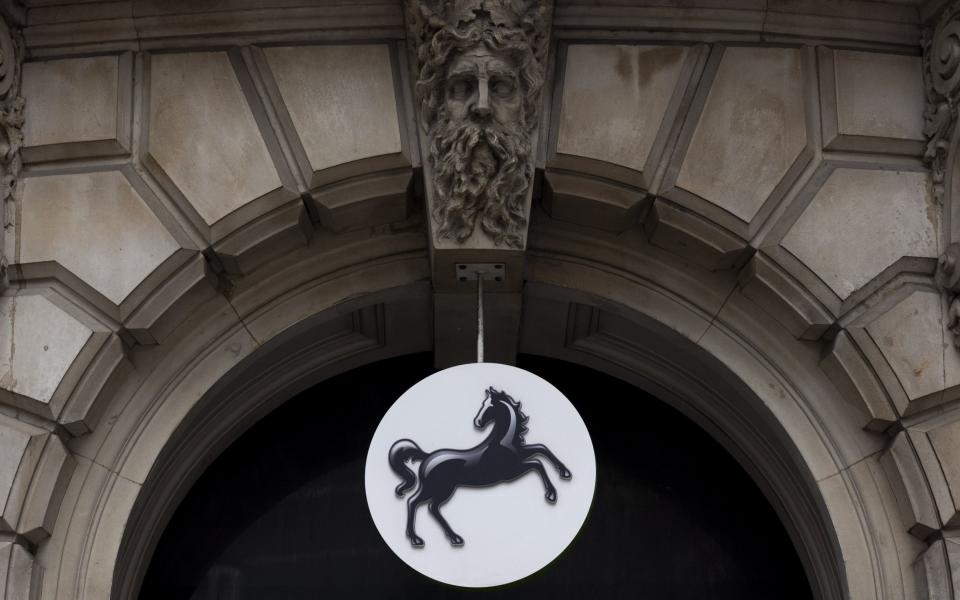This bank hasn’t been this cheap since 2012 – and it’s going to give billions to shareholders

An increase in the first-half dividend, upgraded profit guidance for the year and very modest loan losses and litigation costs all put a nice sheen on the interim results from Lloyds Banking Group and bolster the investment case for the bank we set out in May, especially as the valuation appears to be pricing in a much gloomier outlook.
The shares trade at a 17pc discount to the 54.2p the bank’s tangible book value per share, offer a 5pc yield and come on a single-digit earnings multiple. The economic outlook may be difficult but it can be argued that the stock is pricing in a lot of the potential bad news already.
Lloyds’ shares have fallen by about 20pc from this year’s peak in January and trade no higher now than they did in late 2012, even though the bank has paid out £11.8bn in dividends and returned another £2.1bn in cash to shareholders via buybacks over the past decade.
That equates to 45pc of the bank’s current market value and there are further cash returns to come: Lloyds is increasing its first‑half dividend by more than expected, to 0.8p a share from 0.67p a year ago.
Despite concerns over the fragile state of the British economy, the risk of a housing market slowdown and increased bad loan losses, the first-half pre-tax profits of £3.7bn beat forecasts. The interim numbers also underpinned full-year 2022 pre-tax profit forecasts of £6.6bn, especially as the chief executive, Charlie Nunn, raised guidance for two key swing factors for the bank’s earnings.
First, he now expects a net interest margin of more than 2.8 percentage points, compared with a previous forecast of 2.7 percentage points and last year’s outcome of 2.54 percentage points. Second, the asset quality ratio is expected to come in below the earlier expectation of 0.2pc. That means fewer loan losses than expected.
Put those alongside an unchanged forecast for operating costs of £8.8bn and Lloyds is now looking for a return on tangible equity of around 13pc against 13.8pc last year, when Nunn had initially steered the market to expect something like 11pc for 2022.
Any profit forecast upgrades will bolster confidence in Lloyds’ ability to keep returning any surplus capital to shareholders via dividends and buybacks. The forecast dividend yield represents a premium to the FTSE 100 and the earnings multiple comes at a discount.
This factors in a lot of potential pain already and it might not take a lot to get investors to take a more positive view of the shares in view of the lowly expectations. Lloyds still looks very cheap. Keep buying.
Questor says: buy
Ticker: LLOY
Share price at close: 45.06p
Update: Lancashire
As may also be the case at Beazley, the fellow non‑life insurer and Lloyd’s of London syndicate manager covered here last week, the outlook appears to be getting brighter at Lancashire.
The first-half results last week showed a sharp increase in gross premiums, a jump in profits and strong underwriting performance. Estimated losses relating to Russia’s invasion of Ukraine are, so far, coming in towards the low end of management’s estimated range at $22m (£17.9m).
In the non-life business, a “combined ratio” of less than 100pc is good news as it means underwriting losses and expenses are less than premiums written – in other words, the insurer is making a profit. Lancashire’s combined ratio in the first half was just 78pc, which points to good momentum in underwriting margin. Meanwhile, price increases are helping the top line.
An unchanged dividend of $0.05 per share tops up the pot and the combination of rising premiums and a strong combined ratio could set the scene for further payments down the road. It may not have offered a special dividend since 2018, but Lancashire has already paid total dividends worth just over 820p a share since its listing in 2008.
That figure looks good next to the current share price of 441p and with further dividends to come Lancashire could yet re-establish itself as an attractive yield play.
In the meantime, the shares also trade at a modest discount to their book value of 465p.
We’ll stick with Lancashire. Hold.
Questor says: hold
Ticker: LRE
Share price at close: 441p
Russ Mould is investment director at AJ Bell, the stockbroker
Read the latest Questor column on telegraph.co.uk every Sunday, Tuesday, Wednesday, Thursday and Friday from 5am.
Read Questor’s rules of investment before you follow our tips.

 Yahoo Finance
Yahoo Finance 